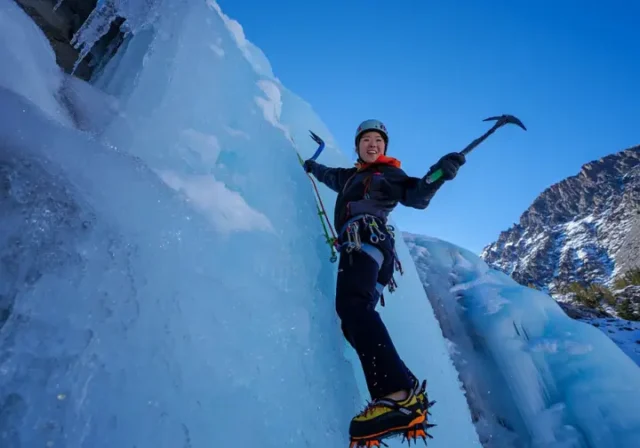In this article
Lee Vining Canyon, a jewel of the Eastern Sierra lee, California, stands as a renowned and accessible mecca for the ice climber. This guide is your definitive resource for understanding its classic climbs, deciphering the ever-changing ice conditions, packing the essential climbing gear, approaching safety with diligence, and planning your trip for ice climbing lee vining. We’ll explore the unique blend of natural and, at times, man-made ice formations and frozen waterfalls that distinguish Lee Vining. Whether you’re an aspiring novice ice climber seeking foundational knowledge or an experienced ice climber after detailed local beta, prepare to delve into this premier ice playground, a true gem for alpine climbing enthusiasts. Many consider the lee vining cascade is a great ice climbing area, especially when the ice forming conditions are prime.
Decoding the Ice: Lee Vining Routes, Walls, and Grading Systems
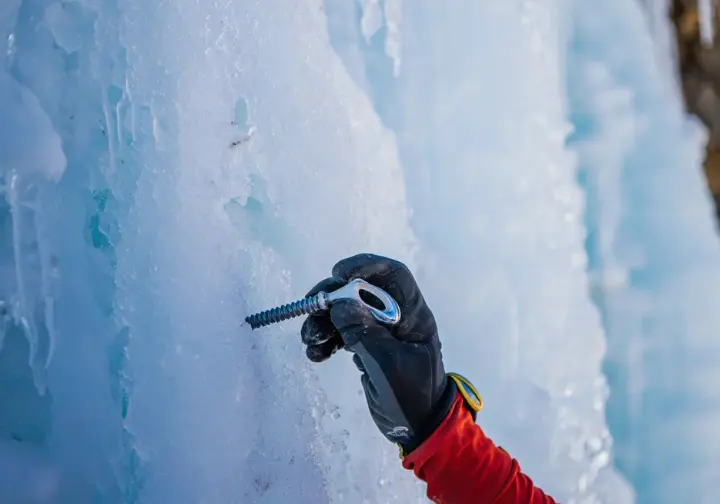
Lee Vining Canyon offers a spectacular array of ice climbing opportunities, from moderate introductory ice flows to challenging multi-pitch testpieces on its impressive wall formations. This section delves into the major ice climbing walls, highlights classic routes, and explains the grading systems you’ll encounter. Understanding these elements is key to planning a successful and rewarding lee vining ice climbing adventure in this notable climbing area.
The Major Ice Arenas: Chouinard Falls, Main Wall, and Beyond
Lee Vining Canyon hosts several primary climbing sectors, each with its unique character. Chouinard Falls (often referred to as Chouinard Wall) typically boasts reliable early-season great ice and a good concentration of moderate routes, including some low-angle ice climbs. Other significant areas include the Main Wall, Bard-Harrington Wall, the Spiral Staircase area, Heel-Toe Wall, and The Narrows. These zones offer a spectrum of difficulties, from WI2-3 ice suitable for learning and progression, to demanding steep pillars and mixed climbing challenges reaching WI5 and M-grades. You’ll find many ice options here.
It’s vital to recognize that route conditions, and even their very existence, can vary dramatically year-to-year and throughout the season. A named route might be a thin smear one year and a robust curtain the next. This variability is a hallmark of Lee Vining ice. For the most current route beta, topos, and climber comments, resources like Mountain Project’s overview of Lee Vining Canyon ice are invaluable for planning your outings and discovering some of the area’s classic ice and mixed climbs. You’ll also need essential gear for mountain environments to tackle these varied arenas.
Spotlight on Classic Routes: WI3 to WI5 Adventures
Lee Vining is famed for numerous iconic routes across various grades. On Chouinard Wall, you’ll find classics like Chouinard’s Right (WI3) and the mixed climbing challenge Tree Route (WI3 M3). The Main Wall features the popular Main Line (WI3-4), the elegant Spiral Staircase (WI3+), and the formidable Cave Man (WI5) with its steep ice. For those seeking steeper challenges, Heel-Toe (WI4 M6) on Heel-Toe Wall offers a memorable test of technical ice skill. You can find more details on Chouinard Wall routes and information on Main Line through community-updated platforms.
These routes are considered “classic” due to their quality of ice, engaging climbing, and historical significance, making them highly sought after. This popularity can mean they are busy, particularly on weekends. Protection on these routes generally consists of good ice for screws, but quality can vary. Carrying an adequate selection of screw lengths is always recommended. Remember, “classic” status doesn’t guarantee optimal conditions; careful assessment is always required, along with appropriate apparel for challenging ice routes.
Understanding Ice and Mixed Climbing Grades (WI & M)
The Water Ice (WI) grading system is key to understanding what to expect. WI2 typically means low-angled ice with good rests, often considered basic ice. WI3 involves steeper sections, often up to 70-80 degrees, with more sustained climbing. WI4 presents sustained vertical ice with limited rests, while WI5 involves long pitches of vertical or near-vertical ice. WI6 signifies vertical to overhanging technical ice that is highly demanding. Lee Vining offers climbs across this spectrum, catering to both intermediate/advanced ice climbers and those newer to the sport. For a comprehensive guide to ice climbing grades, external resources can be very helpful.
The Mixed (M) grading system applies to routes featuring both rock and ice, often climbed using ice tools and crampons on rock. M-grades generally indicate the difficulty of the rock sections. Grades are subjective and can feel different based on current ice conditions—thin, brittle, or even slushy ice will feel harder than thick, plastic ice of the same grade. Climber experience and psychological factors also play a role. Lee Vining’s variable conditions often mean a route can climb differently than its guidebook grade. Newcomers should start conservatively, and consider training for various ice climbing grades before tackling more mixed climbing considerations.
Mastering the Variables: Lee Vining Ice Conditions & Optimal Seasonality
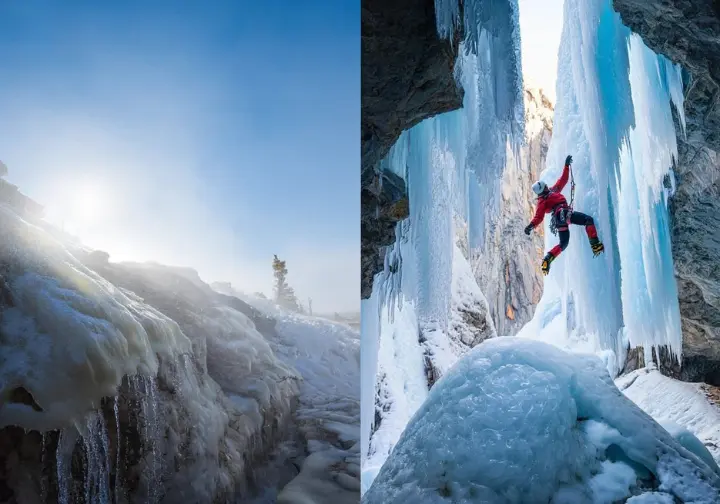
Success and safety in Lee Vining hinge on understanding and adapting to its famously variable ice conditions. This section covers how to check current conditions, the factors influencing ice formation, and the best times to plan your trip. Properly assessing lee vining ice climbing conditions is a non-negotiable part of every outing for any ice climber.
How to Check Current Lee Vining Ice Conditions
Checking current conditions is the most critical step before any Lee Vining ice trip. Ice is ephemeral, and safety depends on accurate, up-to-date information; conditions can change daily or even hourly. Primary resources include local guide services; Sierra Mountain Guides, for example, often post detailed guide service conditions reports. Online forums, particularly the Lee Vining ice conditions forum on Mountain Project, are key. Local gear shops like Eastside Sports can also provide insights into the state of the ice flows.
The Ellery Lake Data Station (California DWR) offers temperature trends, vital as sustained cold is necessary for ice formation. Water flow, sometimes from the “leaky aqueduct,” also plays a significant role. Look for recent, dated reports and be wary of old information. Cross-referencing from multiple sources is always a good strategy. Effective monitoring conditions for challenging ice climbs is a skill honed with experience.
Factors Influencing Ice Formation and Quality
Several meteorological factors govern ice forming. Sustained freezing temperatures, ideally below freezing for several days and nights, are paramount for creating solid water ice. The amount of available water flow from seeps, springs, or the penstock system is another determinant. Aspect also matters: sun exposure melts ice quickly, so north-facing routes often last longer. Temperature fluctuations, or freeze-thaw cycles, can impact ice quality, sometimes leading to brittle or “dinner-plating” ice, or conversely, helping consolidate it into great ice.
Snowfall plays a role too; new snow can insulate existing ice, but heavy snow can also create avalanche hazards or obscure routes. Wind can also affect ice formation and climber comfort. The “leaky wooden aqueduct” or penstock system uniquely influences some ice flows, making their formation somewhat independent of natural precipitation but dependent on the aqueduct’s state. For further reading, you might explore discussions on environmental red flags for ice climbing or the discussion on aqueduct influence. This is somewhat similar to understanding farmed ice formation seen in other locations.
Best Time of Year for Lee Vining Ice Climbing
The typical Lee Vining ice climbing season generally spans from November to March. This is highly variable and entirely condition-dependent. Some years, good ice might form in late October; in others, it might not be climbable until December or could end by late February. Early season (November-December) can mean thin ice and more mixed climbing conditions, with fewer routes “in,” but also fewer crowds.
Mid-season (January-February) is often considered peak, with potentially the most reliable and “fat” ice conditions for ice climbing lee vining. This period can also be the coldest and most crowded, especially on popular routes and weekends. Late season (March onwards) sees ice deteriorate with longer days and warmer temperatures. Melt-freeze cycles can create interesting but potentially hazardous conditions. Sun-exposed routes degrade quickly. Always prioritize safety. For broader context, see this general discussion on timing ice climbs or seasonal winter sports information from Inyo National Forest, which may also cover activities like ski touring. This mirrors the importance of planning for optimal climbing seasons in other mountain disciplines.
Planning Your Ascent: Access, Logistics, Guiding, and Regulations

A successful trip to Lee Vining Canyon requires careful planning, from understanding access and approaches to knowing about guide services and local regulations. This section provides the practical details for your lee vining ice climbing trip planning, whether you’re a seasoned ice climber or planning your first ice course.
Getting There: Directions and Poole Power Plant Access
Lee Vining Canyon is typically accessed via Highway 395, then taking the turn-off for the Poole Power Plant road. Nearby towns like Lee Vining and Mammoth Lakes serve as reference points and bases for supplies and lodging for your climbing trip. The Poole Power Plant road is the primary winter access. While usually plowed, it can be icy or snow-covered, potentially requiring 4WD/AWD vehicles or chains, especially after storms. Parking is at the end of this road; park responsibly, not blocking Southern California Edison (SCE) access or other vehicles.
Parking can be limited, especially on busy weekends. Cell service is often unreliable or non-existent in much of the canyon, so pre-trip planning and communication are essential. For local conditions and access updates, local shops are a good source, and you can find a general area map and access points online. This is akin to navigating access in national park areas where specific logistics are key.
Guide Services and Ice Climbing Instruction
Several prominent and reputable guide services historically operate in Lee Vining Canyon and the Eastern Sierra lee, including Sierra Mountain Guides, Golden State Guiding, International Alpine Guides, and American Alpine Institute. Always choose AMGA-certified guides for professionalism and safety in mountaineering and ice climbing. Courses range from introductory “learn to ice climb” days focusing on basic movement, ice climbing techniques, and safety, to intermediate skills like leading on ice, multi-pitch techniques, and mixed climbing. A two-day ice clinic can be a great start. You can find information on Golden State Guiding services and details on Sierra Mountain Guides programs on their respective websites.
Crucially, commercial ice guiding status can change. Due to overcrowding concerns, some services may have temporarily suspended operations in Lee Vining, or the USFS may have limitations on new permits for commercial ice guiding. Verify directly with guide services for current availability for any ice course in Vining. June Lake is a common alternative Eastern Sierra lee ice climbing venue if guiding in Lee Vining is limited. It’s always good practice to have an understanding guide certifications.
Permits, Fees, and Local Regulations
Lee Vining Canyon is primarily managed by the Inyo National Forest. For general day-use ice climbing accessed from Poole Power Plant, specific wilderness permits are typically not required as these areas are not in designated wilderness. However, a California Campfire Permit might be needed if using a stove, even for day use; check with Inyo NF for current fire restrictions. Parking at Poole Power Plant is generally free, but respect all posted signage and do not block access to the cliff base.
There are no widespread “Adventure Pass” type requirements for this specific access point commonly mentioned for ice climbing. Before your trip, strongly advise checking the official Inyo National Forest recreation permits page for the most current regulations, alerts, or any temporary closures, as policies can change. You might also find some Mono County permit and fee information relevant. This is similar to understanding park fees and permits in other climbing destinations.
Accommodation: Camping and Lodging Options
Lodging options are available in the nearby town of Lee Vining, with establishments like Lake View Lodge and Murphy’s Motel. Larger hubs such as Mammoth Lakes or June Lake offer more amenities but involve a longer drive. Winter availability can be limited, so booking in advance is advisable for any climber. Developed USFS campgrounds in the immediate Lee Vining area are typically closed in winter due to snow and freezing conditions. Always verify any potential openings directly with the Inyo NF developed campground status page.
Dispersed camping on Inyo National Forest land is generally allowed, but finding accessible and suitable spots in winter can be challenging due to snow cover on forest roads. Emphasize Leave No Trace principles, packing out all waste (including human waste via WAG bags), and adhering to fire restrictions. Resources like Hipcamp or The Dyrt might list private options, but always cross-reference with official USFS information for dispersed camping rules. For general information on Lee Vining Creek area lodging, local county resources can be useful. Considering accommodation options near climbing areas is a common part of trip planning.
Gearing Up & Staying Safe: Essential Equipment and Hazard Management for Lee Vining Ice Climbing
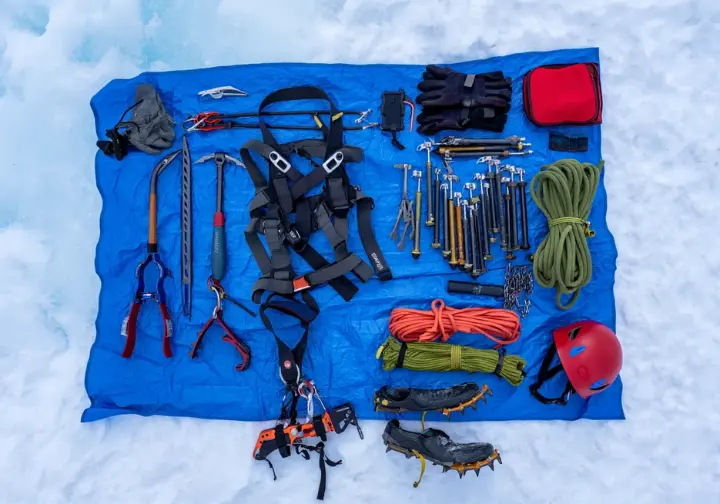
Proper climbing gear and a keen awareness of hazards are paramount for a safe and enjoyable Lee Vining ice climbing experience. This section covers the specialized climbing equipment you’ll need and how to manage the objective and subjective dangers inherent in the canyon. Having the right lee vining ice climbing gear and safety knowledge is non-negotiable for every ice climber.
Essential Ice Climbing Gear Checklist
A comprehensive gear list is vital. Technical Ice Tools: Modern, leashless ice tools are standard; ensure sharp picks. Crampons: Properly fitted, sharp mountaineering crampons (mono or dual-point) are essential. Ice Screws: A rack of 10-12 screws of varying lengths (10cm to 22cm) is typical. Ropes: Dry-treated dynamic climbing ropes (single 60-70m or half/twin). Helmet: A climbing-specific helmet is non-negotiable. Harness: A comfortable climbing harness fitting over winter layers. Belay Device: ATC-style or assisted braking device suitable for icy ropes.
Apparel: A robust layering system (baselayers, midlayers, softshell, hardshell, puffy jacket), warm gloves/mittens (multiple pairs), warm hat, balaclava. Boots: Insulated, stiff-soled mountaineering boots. Backpack: 30-40L pack. Headlamp: Essential for short winter days. Navigation: Map and compass/GPS. First-Aid Kit: Comprehensive for climbing/cold injuries. Refer to a detailed ice climbing equipment list or advice on building an ice climbing rack for specifics. Consider selecting the lightest ice screw options to optimize your rack.
Objective Hazards: Avalanches, Icefall, and Rockfall
Lee Vining Canyon contains significant avalanche terrain, with many climbs situated below or in avalanche paths. Avalanches: Check the Eastern Sierra Avalanche Center forecasts daily. Understand ratings and recognize avalanche terrain. Carrying and knowing how to use a beacon, shovel, and probe is critical if venturing into such areas with deep snow. Icefall: Falling ice is a constant danger. Ensure careful belay positioning (sheltered if possible) and wear a helmet at all times. Shouts of “Ice!” are crucial warnings. Some climbers share experiences, like this discussion of Lee Vining icefall incidents.
Rockfall: Can occur, especially on mixed climbing routes or during freeze-thaw cycles when loose rock can be dislodged from the cliff. Helmets are key. Variable/Thin Ice: Climbing on thin, poorly bonded, or “rotten” ice is extremely dangerous. Ice tools and screws can pull out, and entire formations can collapse. This requires careful assessment and conservative decision-making. The importance of a quality climbing helmet cannot be overstated when facing these mountain hazards.
Subjective Hazards and Safe Climbing Practices
Human error and judgment play a significant role in climbing accidents. Overconfidence, attempting routes beyond one’s ability (especially for a novice ice climber without previous climbing experience), inadequate preparation, fatigue, and poor communication are major contributors. Honest self-assessment and conservative decision-making are vital. Sound ice climbing techniques—efficient swings, secure footwork, balanced stances—reduces fatigue and the likelihood of slips. Practice and instruction are key to developing these skills.
Attentive belaying is critical. Manage rope slack carefully. Ensure belay anchors are solid. Clear, standardized communication between climber and belayer is essential, especially in windy conditions. Have a plan for self-rescue or summoning help. Carry a first-aid kit, know basic first aid for cold injuries and trauma, and understand that cell service is unreliable. A general ice climbing safety discussion can offer peer insights, while guide services sometimes highlight concerns about unsafe practices observed. Always adhere to the fundamental rules of climbing safety.
The Responsible Climber: Etiquette, Conservation, and Sustaining Lee Vining
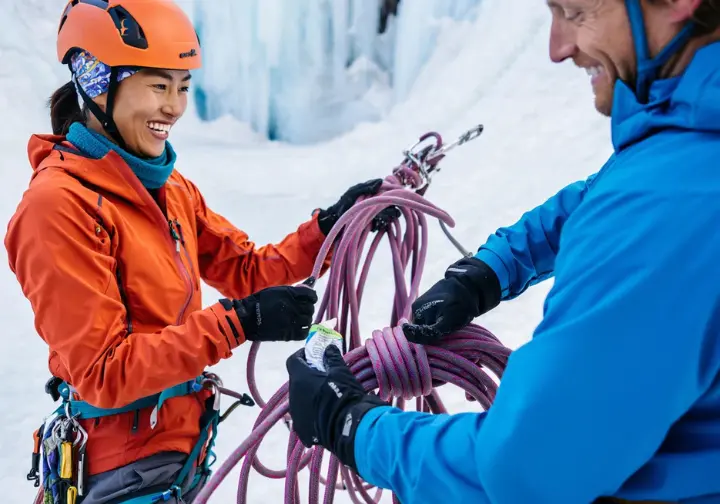
Enjoying Lee Vining’s spectacular ice comes with the responsibility to protect it. This section covers crag etiquette, Leave No Trace principles, and understanding local conservation issues to ensure sustainable lee vining ice climbing practices for future generations of ice climbers.
Crag Etiquette and Minimizing Impact
Managing crowds is important, especially at popular spots like Chouinard Falls. Be patient, communicate with other parties, and consider climbing less popular routes or visiting on weekdays. Avoid climbing directly below other parties due to icefall risk. Keep noise levels reasonable to respect fellow climbers and the natural environment. Share routes respectfully; if multiple parties are interested in the same line, communicate intentions and be willing to wait or choose an alternative.
Minimize damage to ice formations. Avoid excessive “hacking” or creating new ice tool placements if established ones exist. Ice is a fragile and temporary medium. Following ice climbing etiquette guidelines helps everyone have a better experience. The challenges of managing climbing in popular areas are not unique to Lee Vining and require community effort. Such responsibility is part of broader climber conservation efforts.
Leave No Trace Principles for Ice Climbers
Adherence to Leave No Trace principles is fundamental for every ice climber. Plan Ahead and Prepare: Know regulations, weather, and conditions. Travel in small groups. Travel and Camp on Durable Surfaces: Stick to established trails and durable surfaces like snow, ice, or rock. Dispose of Waste Properly: Pack out everything, including food scraps, trash, and human waste (use WAG bags). Leave What You Find: Minimize site alterations.
Minimize Campfire Impacts: Use stoves for cooking. Respect Wildlife: Observe from a distance; do not feed animals. Be Considerate of Other Visitors: Share space respectfully. The Inyo National Forest provides guidance on Inyo NF safety and ethics, and there are specific LNT principles for winter recreation to consider. Upholding local ethics and responsible climbing is a universal climber responsibility.
Understanding Local Conservation Issues
The popularity of Lee Vining brings potential for environmental impact and overcrowding, which has led to discussions about management, including the guiding permit situation. Organizations like the Access Fund work with land managers (Inyo NF) and stakeholders (like SCE, operators of Poole Power Plant) to address access and conservation. The unique water diversions/penstock system influencing some ice formation also has related environmental or access considerations that climbers should be aware of.
Climbers are encouraged to stay informed about local issues, support conservation organizations, and advocate for responsible access. You can find information on Access Fund involvement in forest planning and the USFS stance on commercial guiding permits through official channels. This climbing area deserves our respect.
Key Takeaways for Your Lee Vining Ice Adventure
Lee Vining Canyon offers an unparalleled ice climbing experience, but it demands respect and thorough preparation. Prioritize safety above all else. Research conditions, routes, and hazards meticulously. Ensure you have the correct climbing equipment, the necessary skills, and compatible partners for your chosen objectives. Ice conditions are the ultimate arbiter of your climbing day; be flexible and ready to adapt your plans based on current realities, weather, or crowding. Having backup objectives is always a prudent strategy for any climber.
Embrace the journey of continuous learning. Lee Vining provides endless opportunities for skill development, from your first swings into WI2 to projecting challenging mixed climbing lines. Start within your comfort zone, consider professional instruction to build a solid foundation, and always strive to refine your technical ice skills and mountain sense. Finally, respect the environment and the climbing community. Practice Leave No Trace principles diligently, be courteous to other climbers. Understand that access is a privilege. Your responsible behavior helps ensure that Lee Vining, a world premier ice destination, remains an incredible resource for all.
Frequently Asked Questions about Lee Vining Ice Climbing
Is Lee Vining ice climbing suitable for complete beginners? >
What is the single most important thing to check before heading to Lee Vining for ice climbing? >
Do I need avalanche safety gear (beacon, shovel, probe) for all climbs in Lee Vining Canyon? >
How crowded does Lee Vining typically get, and how can I avoid the crowds? >
We are a participant in the Amazon Services LLC Associates Program, an affiliate advertising program designed to provide a means for sites to earn advertising fees by advertising and linking to Amazon.com. As an Amazon Associate I earn from qualifying purchases. We also participate in other affiliate programs. The information provided on this website is provided for entertainment purposes only. We make no representations or warranties of any kind, expressed or implied, about the completeness, accuracy, adequacy, legality, usefulness, reliability, suitability, or availability of the information, or about anything else. Any reliance you place on the information is therefore strictly at your own risk. Additional terms are found in the terms of service.



